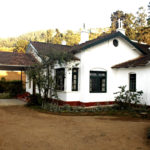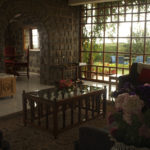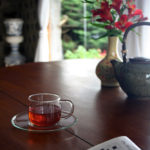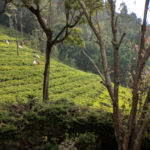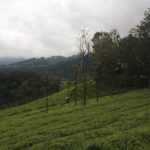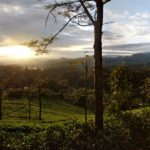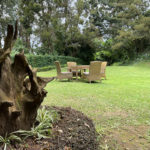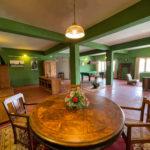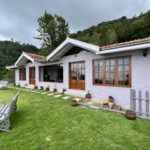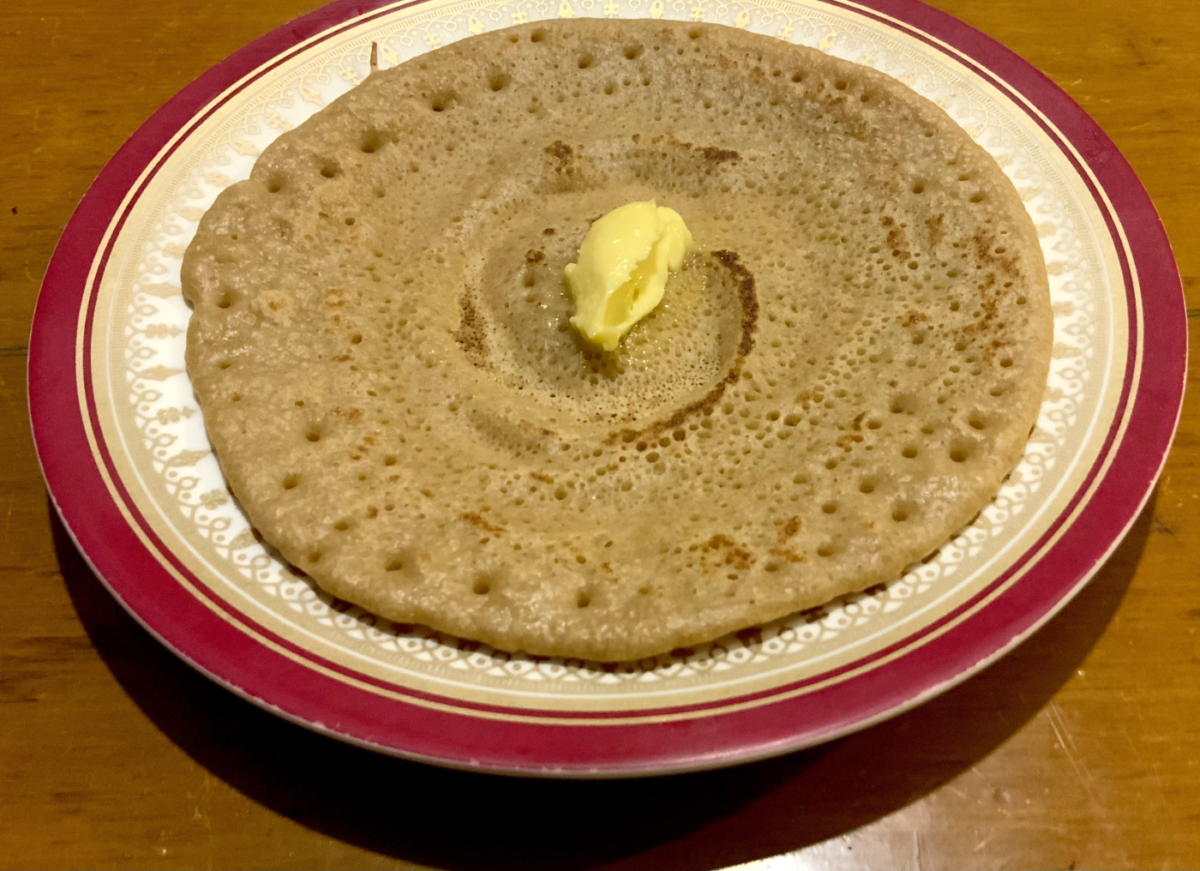 Pancake served with homemade butter. Photo by Chef Khaja Zafarullah
Pancake served with homemade butter. Photo by Chef Khaja Zafarullah
“A South Indian meal with no white rice is surprising,” says Jayalakshmi Srikumar, a Chennai-based retired professor of Economics who recently visited Harsha Bellie, a Badaga food enthusiast, at her lovely bungalow near Sim’s Park, for a home-cooked meal. “It was a perfectly balanced meal with the right proportion of carbs, proteins, vegetables, and greens.”
Of late, many visitors to the Nilgiris are curious about the local Badaga cuisine. They are fascinated by the stories of this indigenous tribe that has lived in the Blue Mountains for centuries.
Click an image to launch the slideshow
One way to sample Badaga cuisine is to take the winding, scenic Catherine Falls Road from Bandishola near Coonoor to reach the Odae restaurant in the heart of tea country. On the way, if you are lucky, you might see a wild boar, barking deer, or a gaur or two. Of course, if you are in the know of things, you would have ordered your Badaga meal well in advance.
Dr Suresh Belliraj, an educationist and restaurateur who runs Odae, says that Badaga cuisine is not commonly on the menu but will be served if pre-booked. As a hands-on restaurateur, he likes to oversee the entire preparation as Badaga food is still a rarity, and there aren’t any cookbooks yet.
Dr Belliraj’s attention to detail has not gone unnoticed. Bangalore-based chef Khaja Zafarullah writes, “…The flavors are dominated by the distinctive red and black Badaga masala that brought the pork, local chicken curry, and other delicacies alive with flavor. More than the excellent cuisine, the stories behind the recipes and local ingredients made me appreciate a beautiful culture and gentle traditions.”
Click an image to launch the slideshow
Tenerife Hill
Meanwhile, not too far away is the Tenerife Farm. Stay nestled in a tea estate on the slopes of Tenerife, Coonoor’s highest peak. Tenerife is a part of Tranquilitea, a family-owned concern specializing in home and farm stays in the Nilgiris. Sandeep Subramani, who manages the business, says they now have four properties – one in Ooty, two in Coonoor, and one 15 km away from Coonoor. At all the properties, Badaga food is offered along with other Tamil Nadu cuisines.
Sandeep Subramani also offers a session of tasting of gourmet teas. He talks about the various aspects, such as elevation, soil, rain, temperature, and harvesting methods, which make for a good cup.
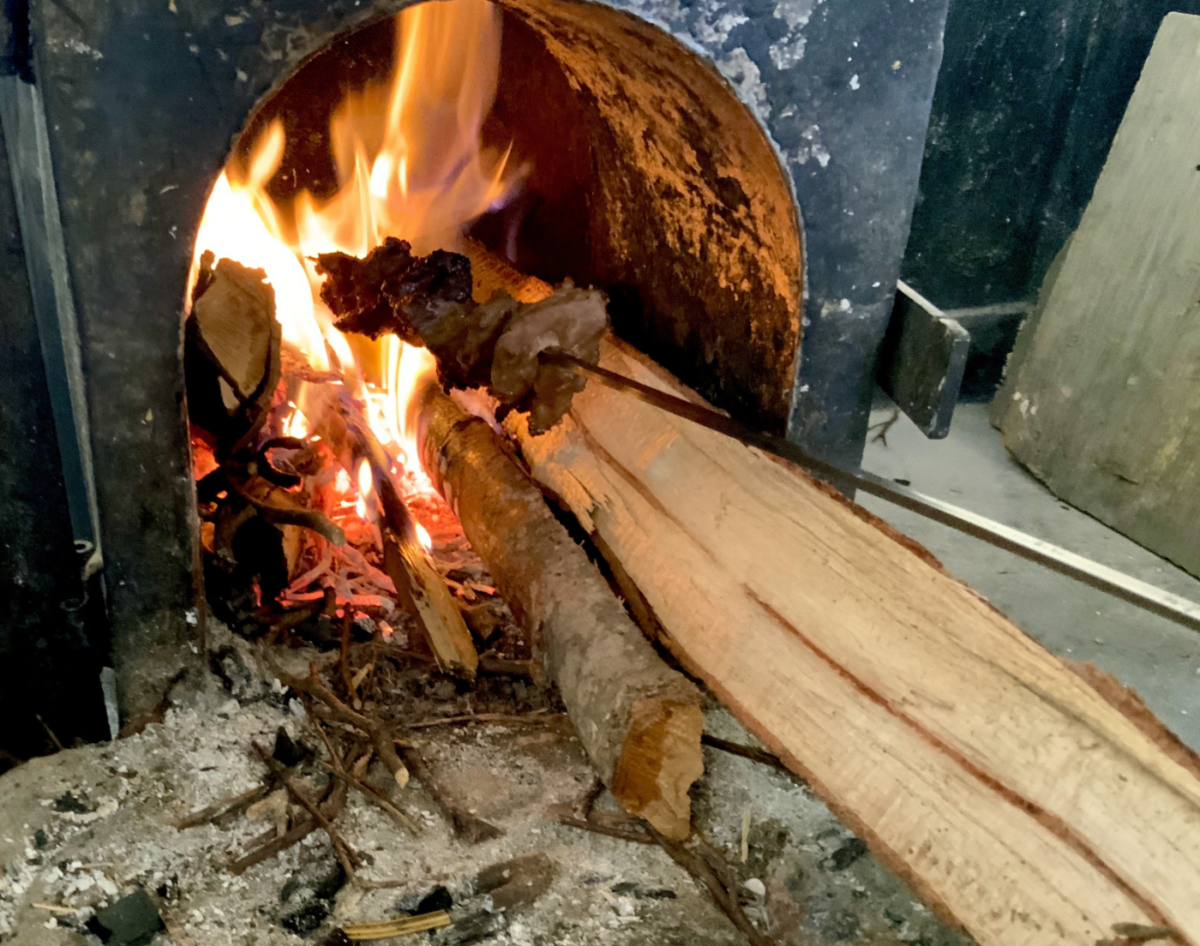
Of late, Badaga cuisine has been getting much attention because it is millet-based, and this cereal is very much in the news. One reason that Badaga food attracts visitors is that, for centuries, their food has had no outside influence, unlike the cuisines of the coastal regions, the Deccan, or the plains of central India. Imagine no Persian, Chinese, or European notes at all!
Incidentally, the Food and Agriculture Organization and the United Nations have recognized 2023 as the International Year of Millets to create awareness about the health and nutritional benefits of the cereal.
Long before millet became the much-talked-about cereal, it was a staple of the Badagas. The Badagas have also been eating super foods such as Amaranthus seed and even the elusive high-grown wheat for a long time.
For years, the Badagas and other hill tribes lived among the rolling grasslands and the lofty crags protected from the tumult of the rest of India. Their occasional interface with the outside world came through intrepid traders, often Chettiars, who braved the tough terrain and made their way up the mountains bringing with them fabric, brass vessels, jaggery, and spices in exchange for grain such as millets, wheat, and barley.
Click an image to launch the slideshow
Major changes in the Badaga lifestyle happened only after the Nilgiris came into the possession of the British East India Company after the Treaty of Srirangapatnam in 1799. The next two decades saw the English exploring and discovering the beautiful mountains and the cooler climate and realizing that it was ideal for rest and recuperation from the heat and dust of the plains.
As the English settlements in Ooty, Coonoor, and Kotagiri grew, Badaga villages gave up their fields and vast grazing lands to the new arrivals. However, some villages managed to retain their herds until the mid-1950s at least. Over the years, though their herds dwindled, milk and dairy products have remained an important part of the Badaga diet.
Badagas were quick to adapt or were pragmatic enough to change with time; one doesn’t know. The Nilgiri Mountain Railway and the cultivation of English vegetables and tea contributed to the community’s economic development.
However, until very recently, their food habits remained unchanged. As late as the 1960s, many Badaga friends recall visits to their hatties, as the Badaga villages are called, where every meal was prepared with crops from the fields surrounding the village. Geetha Jayaprakash, who runs a boutique in Coonoor, recalls that ragi, wheat, barley, potatoes, beans, and greens were grown in the fields around the house. She says, “I don’t know when rice became a staple among the Badagas. Maybe it was the convenience of it.”
Bellie points out that the hatties at the foothills of the Nilgiris did grow rice. They also tended their cattle and traded with the other Tamil communities. Though rice, too, has made inroads into their diet, ragi and saamai are the favored cereals, she said.
Bellie explains how ragi (finger millet) was harvested in the old days, sun-dried and hand-ground in a stone mill. The flour would then be stored for use later.
The flour would be made into balls, called hittu, and served with an aromatic gravy of beans (cooked or roasted). How and when it was cooked as a meal depended on each family’s preference. Some people said that in most cases, the ragi hittu would be cooked in the evenings for the night meal, with enough left over for the next day’s mid-morning meal. At the same time, others believed that the food was cooked fresh for every meal. It may have depended on the economic status of the family and the help they had around the kitchen.
Other than ragi, godumai (Nilgiri or high-grown wheat, which is in much demand nowadays) was also used to make pancakes served with sweetened milk or coconut milk.
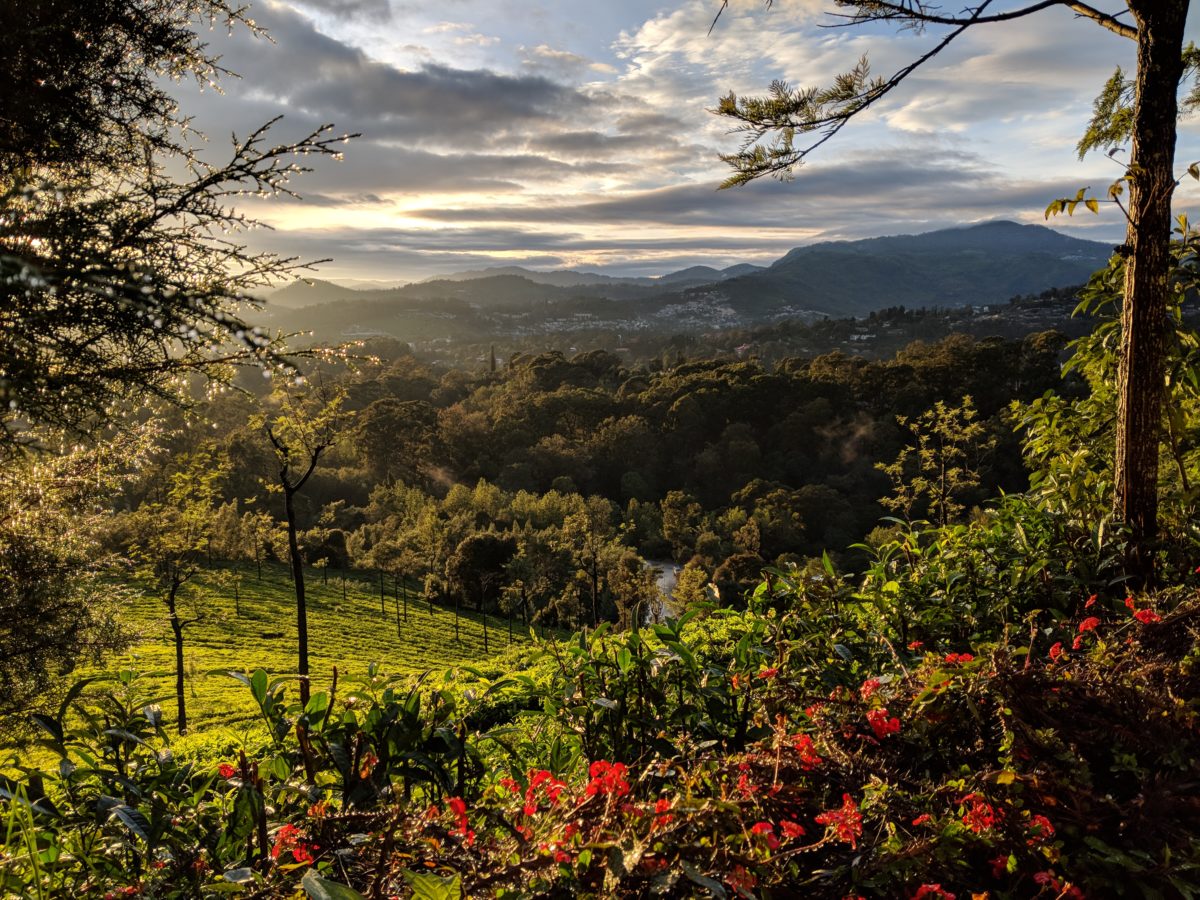
Sumathi Thiagaraj Gowder, artist and member of the Bharatiya Vidhya Bhavan, recalls that milk and milk products were a part of Badaga cuisine. She said that churning the curd for butter was an important chore that women did in the evening.
Unlike other farming communities where work in the fields started at the crack of dawn. In the hatties, very few people went out early in the morning because of the cold weather, says Dr Belliraj. A snack before the big mid-morning meal was common. Often, the snack would be leftovers from the previous day’s meal. Also, ganjikai, a grain similar to barley, was popped over a fire and made for a wholesome snack between the morning meal and dinner, served quite early.
Amaranthus, a superfood that has become very popular for its health benefits and grows aplenty in the Nilgiris, is another favorite. The seeds are popped and mixed with honey, making it a nutritious and healthy treat. Bellie remembers the flavors from her mother’s kitchen and tries to reproduce the taste for her guests.
Dr. Belliraj says that sometimes when the butter is being clarified into ghee, a handful of saamai or millet would be tossed in. The ghee would rise to the top, and the residue made for a rich and tasty snack.
Both thin and thick wheat pancakes are made; the thin ones are savory and eaten either with milk and jaggery or just dipped in buttermilk, while the thick pancakes are sweet. In the old days, these pancakes would be carried to the fields to be eaten when the men and women took a break from their labor. Sandeep Subramani says that these pancakes are popular with his guests.
Some Badagas are non-vegetarian, and in the early days, game meat was very much a part of the menu, with wild boar and deer being popular choices. Sometimes, porcupine, the jungle fowl, and even the Malabar squirrel found their way into the cooking pot. Nowadays, it’s just chicken and pork, Dr Belliraj said.
Postscript
On the road to Odae, the sign board reads “St. Catherine Falls.” Visitors often ask who Catherine was and why the double-cascaded waterfall is named after her. Catherine Cockburn (pronounced Coburn) was the wife of M.D. Cockburn—a Scottish coffee planter and district collector of Salem, in Tamil Nadu, who introduced coffee cultivation in Yercaud in 1820 at a location now known as the Grange Estate. Why local authorities canonized her is anybody’s guess.
Photos courtesy Sandeep Subramani unless credited otherwise.
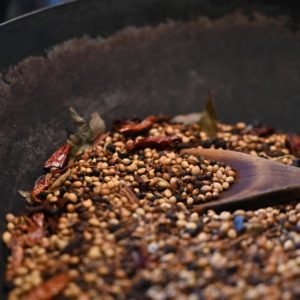
Koi Masudi - Black Masala Chicken Curry
Equipment
- 1 Frying pan
- 1 Blender
- 1 Spice grinder Or mortar and pestle
- 1 Knife
- 1 Cutting Board
Ingredients
Black Masala Curry Powder
- 1/2 kg Dried red chilies
- 3/4 kg Coriander seeds
- 100 grams Cumin (Jeera) seeds
- 50 grams Poppy (Khus Khus) seeds
- 10 grams Fenugreek seeds
- 50 grams Mustard seeds
- 1 tsp Vegetable oil
Badaga Chicken Curry
- 1/2 kg Chicken (breast or thigh) cleaned and cut into large pieces
- 2 cups Red onion sliced and divided into 2 equal cups
- 4 or 5 cloves Garlic
- 3 to 4 tbsp Black masala curry powder
- Salt to taste
- 2 tbsp Vegetable oil
Instructions
To Make Black Masala Curry Powder
- Over low heat, dry toast all of the ingredients separately. Save the chilies for last.
- While toasting the chilies, add a teaspoon of vegetable oil.
- Combine all of the ingredients in a spice grinder or mortar and pestle and grind into a smooth powder.
- This makes a large quantity of curry powder. Store the remaining powder in an air-tight jar or container.
Badaga Chicken Curry
- Fry one cup of onions and the garlic in a tbsp of oil. Be careful not to burn the mixture.
- Once brown, transfer the onions and garlic to a blender or mortar and pestle and blend into a paste. Set aside.
- Fry the cleaned chicken in 1/2 a tbsp of oil until brown on both sides, then set aside.
- Fry the second cup of cut onions in the remaining oil. Add salt, and when it turns pink, add the chicken pieces.
- Add three tablespoons of the masala powder to the dish, taste the masala and if required, add another tablespoon of the powder.
- Then, add the ground onion paste. Cover and cook till done. You might need to add some water to the pan for a thinner gravy.
Notes
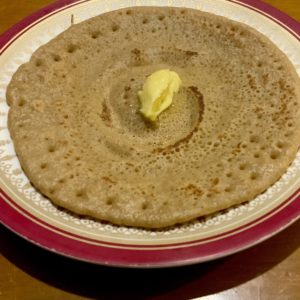
Badaga Wheat Pancake
Equipment
- 1 Mixing bowl
- 1 Mixing spoon
- 1 Griddle or fry pan
Ingredients
- 1 cup Wheat flour godumai- Nilgiri or high-grown wheat is traditionally used in Badaga cooking but regular whole wheat works as well
- 1/4 tsp Baking soda
- 1.5 cups Room-temperature water
- Salt to taste
- 1 tbsp Oil or ghee
Instructions
- Mix all of the ingredients into a thin, smooth batter. Add the water slowly, small bits at a time. If the batter becomes too thin, add a bit more flour.
- Heat the griddle or fry pan and pour some batter onto it.
- Once the pancake begins to bubble, flip it over and cook for one more minute on the other side.
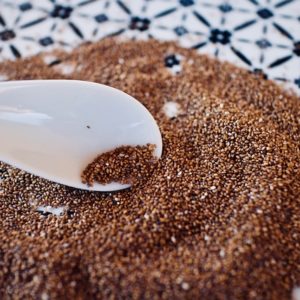
Badaga Amaranth Power Drink & Snacks
Equipment
- 1 Frying pan with lid
- 1 Spice grinder or mortar and pestle
Ingredients
Amaranth Powder or Flour
- 1 cup Amaranth seeds
Amaranth Lassi
- 2.5 cups Plain Greek Yogurt or whole milk yogurt
- 1/2 cup Fruit of your choice i.e. mango, banana, strawberry
- 1/4 cup water
- 1 tbsp Amaranth powder
Amaranth Porridge
- 1 cup Amaranth powder
- 2 cups Milk or buttermilk Almond milk or water can be used instead
- 1 tbsp Honey Jaggery or sugar can be used
Popped Amaranth
- 1 tbsp Amaranth seeds
- Salt or sugar and cinnamon to taste
Instructions
Amaranth Powder (Flour)
- Toast seeds on medium heat in the frying pan with the lid on.
- Transfer toasted seeds to a spice grinder or mortar and pestle. Grind into a fine powder.
- Store in an air-tight jar.
Amaranth Lassi
- Place all the ingredients into a blender and blend until smooth.
Amaranth Porridge
- Add the Amaranth powder and half of whichever liquid you're using to a small saucepan and stir frequently for about 10 minutes until the liquid is absorbed.
- Then add in the remaining liquid and stir for another 5 minutes until the porridge has thickened.
- Mix in the sweetener of your choice and top with fresh fruit or nuts.
Popped Amaranth
- Heat a pot with high sides over medium-high heat.
- Once the pot is hot enough, add in the Amaranth seeds and shake continuously until all of the seeds have popped like popcorn.
- Transfer to a bowl and sprinkle with some salt or cinnamon and sugar.
